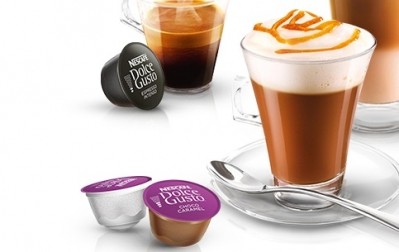Coffee drinkers beware: Brazil’s coffee harvest set to decline again

The result was unveiled this month in the second annual coffee crop forecast for 2015 published by Brazil’s National Supply Company (Conab). The state-run institution warned that the 2015 harvest would be 2.3% lower than the 45.34m sacks harvested in 2014.
“If the latest forecast announced by Conab proves correct, this will be the third consecutive season in which coffee production in Brazil drops,” warned Brazil’s Advanced Research Centre in Applied Economics (CEPEA) in a June 11 release.
Nonetheless, the International Coffee Organization said that coffee prices continued their decline even after the latest Conab forecast - as speculation over the current 2015/16 Brazilian crop suggests that the market has no immediate supply concerns. Indeed, one major trading house has already forecast a global supply surplus for 2015/16.
Arabica up, Robusta down
The premium Arabica crop, of which Brazil is the world's largest exporter, accounts for 74.3% of the total coffee production in the country. Conab expects that coffee growers will harvest 32.91m sacks of Arabica, which is an increase of 1.9% from the previous year.
“This result is due, principally, to a significant 34% rise (1.74m sacks) in the Zona da Mata region of Minas Gerais state, which served to compensate for the losses in other parts of the state, such as Triângulo, Alto Paranaíba and northwest Minas Gerais, where losses are going to total 723,600 sacks,” said Conab.
Minas Gerais, the largest coffee producing state in Brazil, accounts for more than 50% of the total production in the country. The primary crop in the state is Arabica.
On the other hand, Conab indicated that it expects Robusta production to drop 13% to 11.35m sacks in 2015, primarily because of a lower harvest in Espírito Santo, caused by a drought this season.
Espírito Santo, the second largest coffee producer, accounts for around 80% of the Robusta production in Brazil. Although Robusta has a lower market value than the costlier Arabica coffee cultivar, the former is popular among coffee growers for its sturdiness and ease of cultivation.
Around 20% of the 2015 coffee crop in Brazil was harvested before June, while the main harvesting months are expected to be June (27.4%), July (23.8%) and August (21.2%).
USA – Brazil’s prime coffee buyer
Brazil exported 36.70m sacks of coffee (green, roasted & ground and soluble) in the past 12 months, between June 2014 and May 2015, up by 9.42% from the previous 12-month period, according to the country’s Council of Coffee Exporters (CeCafé).
Exports included 33.21m sacks of green coffee (28.72m sacks of Arabica and 4.49m sacks of Robusta), plus 3.49m sacks of processed coffee (27,429 sacks of roasted & ground and 3.46m sacks of soluble coffee).
In its latest monthly report on Brazilian coffee exports, CeCafé also revealed that Brazilian revenues from coffee exports grew 34.1% to USD6.96bn in the June 2014 – May 2015 period compared to the previous season.
CeCafé director-general Guilherme Braga said: “There was a rise in global consumption that continues to expand at 2% per annum and Brazil is well recognized in terms of product quality and steadiness of supplies, in addition to competitive prices, which explains these increases [of exports].”
The US was the largest individual importer with 3.02m sacks in January-May 2015, up by 1.88% from the same period in 2014. Second-ranked Germany imported 3.61% less coffee in the same period, or 2.76m sacks, while third–ranked Italy bought 6.06% more coffee in the same period, or 1.20m sacks.
Brazil’s coffee exports to the UK witnessed the largest boom this year as exports rose 111.96% to 599,016 sacks in the first five months of the year, up from 282,602 sacks in the same period last year.
The CeCafé report also reveals that the bulk of Brazil’s coffee exports in the first five months of this year left the country via the port of Santos, which loaded 84.1% of the exported product (12.53m sacks). The ports of Rio de Janeiro trailed in second place with 7.7% of the total (1.14m sacks), and Vitória port was in third place with 5.3% of the total volume (784,128 sacks).









